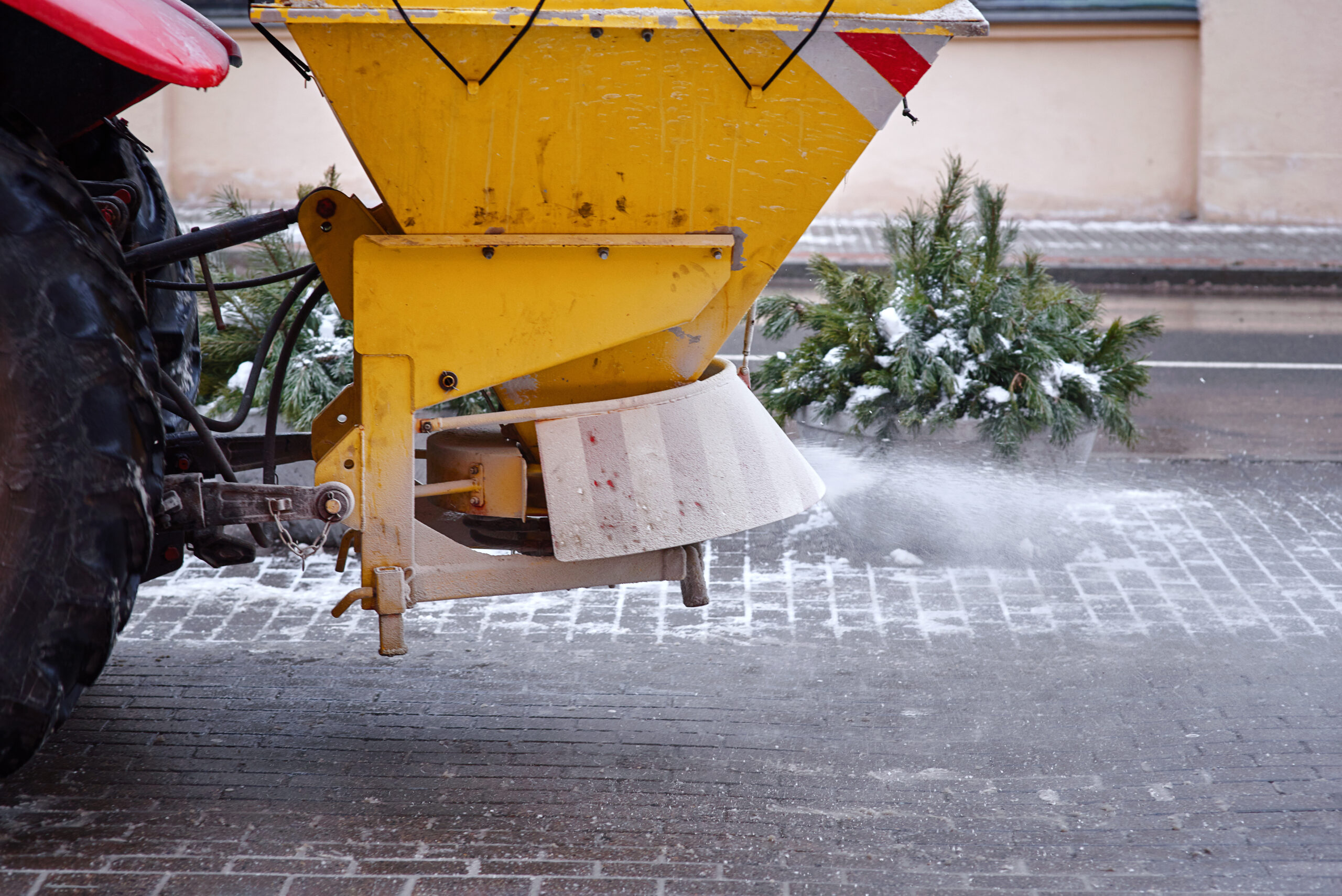Sustainable Practices in Commercial Landscaping
Maintaining a commercial property’s outdoor space goes beyond appearance. A well-planned landscape can improve energy efficiency, support local ecosystems, and reduce long-term costs. Traditional landscaping methods often require excessive water, chemical fertilizers, and frequent maintenance. Adopting sustainable strategies not only lowers environmental impact but also enhances durability and functionality.
Selecting Native and Drought-Resistant Plants
Plant selection plays a major role in determining maintenance needs. Many commercial properties rely on non-native species that require constant care, irrigation, and chemical treatments to survive. Switching to native and drought-resistant plants reduces these demands while ensuring a vibrant, low-maintenance outdoor space.
- Native plants have adapted to local soil and climate conditions, making them more resistant to drought, pests, and diseases. These species thrive without synthetic fertilizers or excessive watering, making them a practical choice for sustainable landscaping.
- Drought-resistant plants such as succulents, ornamental grasses, and deep-rooted perennials maintain their health even in dry conditions. This approach not only cuts down on water usage but also supports pollinators and native wildlife.
- Replacing large grass lawns with native ground covers further reduces maintenance. Traditional turf requires frequent mowing, watering, and fertilization. Alternatives like creeping thyme, clover, and buffalo grass stay green year-round while requiring minimal intervention. This shift creates a visually appealing landscape that remains functional and cost-effective over time.
Efficient Water Management
Water conservation remains one of the biggest challenges in commercial landscaping. Poor irrigation practices lead to wasted resources, higher utility costs, and plant stress. Implementing smart water management strategies keeps plants healthy while reducing unnecessary consumption.
- Drip irrigation delivers water directly to plant roots, minimizing evaporation and runoff. Unlike traditional sprinklers, this method ensures precise watering, preventing excess moisture that can lead to fungal diseases.
- Moisture sensors placed in soil provide real-time data on hydration levels, allowing irrigation systems to adjust automatically based on weather conditions.
- Rainwater harvesting offers another sustainable solution. Capturing and storing rainwater for irrigation reduces reliance on municipal supplies. Storage tanks or underground cisterns collect runoff from rooftops, directing it to landscaped areas when needed. This strategy not only conserves water but also prevents erosion and excessive stormwater runoff.
- Permeable paving and bioswales improve drainage while reducing the strain on stormwater systems. Conventional concrete and asphalt surfaces prevent water absorption, leading to pooling and erosion. Permeable pavers, gravel pathways, and bioswales allow water to filter naturally into the ground, replenishing local water tables. These methods help manage rainwater efficiently while preventing flooding in high-traffic areas.
Reducing Chemical Use and Enhancing Soil Health
Overuse of chemical fertilizers and pesticides can degrade soil quality, harm beneficial insects, and contribute to water pollution. Sustainable landscaping focuses on improving soil health through natural amendments and integrated pest management.
- Organic compost and mulch enhance soil structure, retain moisture, and provide essential nutrients. Instead of relying on synthetic fertilizers, composted plant material, leaves, and grass clippings create a nutrient-rich environment that supports plant growth.
- Mulching around trees and flower beds helps prevent weed growth while maintaining consistent soil temperatures.
- Integrated pest management (IPM) reduces dependence on chemical pesticides. This strategy combines biological controls, habitat modification, and targeted treatments to manage pest populations. Introducing beneficial insects such as ladybugs and lacewings helps control aphids and other harmful pests.
- Companion planting—where specific plants are placed together to deter insects—adds another layer of protection. Choosing disease-resistant plant varieties further minimizes the need for chemical interventions.
- Maintaining soil health also involves reducing soil compaction. Heavy foot traffic and machinery can compress soil, making it harder for water and air to reach plant roots. Aeration loosens compacted soil, improving drainage and root growth. Adding organic matter to soil increases its ability to retain moisture, reducing the need for frequent irrigation.
Energy-Efficient Landscape Design
Strategic planting and design choices can significantly lower a building’s energy consumption. Trees, shrubs, and ground covers offer natural cooling and wind protection, reducing reliance on artificial climate control.

- Deciduous trees placed on the south and west sides of a building provide shade during summer while allowing sunlight through in winter. This natural cooling effect reduces the need for air conditioning. In colder months, sunlight passes through bare branches, helping to warm the building’s interior.
- Windbreaks made from dense evergreen trees or shrubs protect buildings from harsh winds, reducing heating costs. By blocking cold air and minimizing heat loss, these plantings improve overall energy efficiency.
- Installing green roofs or living walls further enhances insulation while reducing heat absorption from rooftops.
- Strategic landscaping around HVAC units prevents overheating and improves system efficiency. Tall grasses, shrubs, or shade structures placed nearby keep units cooler, preventing energy waste caused by overheating. Proper placement ensures airflow remains unobstructed while enhancing efficiency.
Sustainable Hardscaping and Material Choices
Hardscaping elements such as walkways, patios, and retaining walls contribute to the overall sustainability of a landscape. Traditional materials like concrete and asphalt absorb heat and contribute to stormwater runoff issues. Using eco-friendly alternatives reduces these impacts while maintaining durability.
- Permeable pavers allow water to filter through the surface, preventing runoff and improving groundwater recharge.
- Recycled materials such as reclaimed wood, crushed stone, and composite decking provide durable options with a lower environmental footprint.
- Locally sourced materials further reduce emissions associated with transportation.
- Using reflective or light-colored paving materials helps mitigate the urban heat island effect. Dark surfaces absorb and retain heat, raising temperatures in outdoor spaces. Light-colored materials reflect sunlight, keeping paved areas cooler and reducing overall energy demand.
- Interiorscaping also adds visual appeal to commercial spaces.
Encouraging Biodiversity
A well-planned landscape supports local wildlife and pollinators, contributing to a balanced ecosystem. Monocultures—landscapes dominated by a single plant species—are more susceptible to pests, diseases, and environmental stress. Introducing plant diversity strengthens resilience and enhances ecological benefits.
- Flowering plants attract pollinators such as bees, butterflies, and hummingbirds.
- Shrubs with berries provide food for birds, while native grasses create habitats for beneficial insects.
- Water features, such as small ponds or birdbaths, further support wildlife by offering drinking and bathing areas.
- Avoiding chemical pesticides and herbicides ensures that beneficial insects thrive.
- Providing nesting boxes, rock piles, or hollow logs creates additional habitats, encouraging biodiversity without adding maintenance requirements.
Waste Reduction and Recycling in Landscaping
Commercial landscaping generates significant organic waste, including grass clippings, leaves, and tree trimmings. Instead of sending these materials to landfills, sustainable practices focus on repurposing and recycling.
- Composting plant debris produces nutrient-rich soil amendments that enhance plant health.
- Grass clippings left on lawns decompose quickly, returning nutrients to the soil.
- Wood chips from pruned branches can be used as mulch, reducing waste while improving moisture retention.
- Recycling hardscape materials extends their lifespan and minimizes environmental impact. Old concrete can be crushed and reused as aggregate for new paving projects.
Integrating Smart Technology
Advancements in landscape management technology make it easier to maintain sustainability.
- Automated irrigation systems adjust watering schedules based on real-time weather data, preventing unnecessary water use.
- Soil sensors track moisture levels, guiding irrigation decisions for maximum efficiency.
- Solar-powered outdoor lighting reduces energy consumption while providing necessary illumination for walkways and public areas.
Long-Term Advantages of Sustainable Landscaping
Shifting toward sustainable landscaping practices benefits commercial properties in multiple ways. Reduced water and energy consumption translate into lower operational costs, while healthier plants and soil improve resilience against extreme weather conditions. National Facility Contractors helps businesses implement these strategies with customized solutions that enhance efficiency, reduce maintenance expenses, and support environmental compliance. From sustainable landscaping upgrades to energy-efficient facility improvements, NFC provides the expertise needed to achieve lasting, cost-effective results.
Investing in long-term solutions not only benefits the environment but also strengthens a property’s value and reputation. Sustainable landscapes require less maintenance, offer lasting aesthetic appeal, and demonstrate a commitment to responsible land management.






